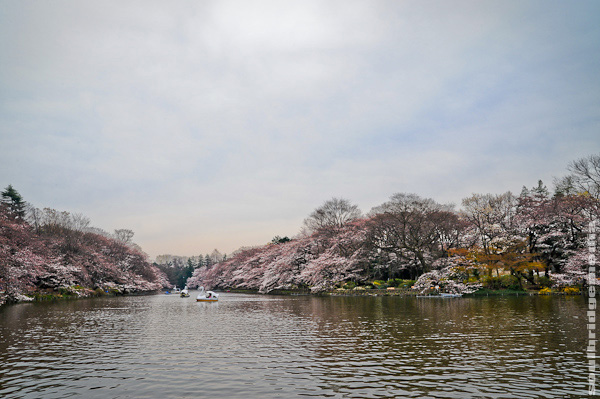
Inokashira Park, Kichijoji, Tokyo
Kichijoji is not really a major stop on the usual Tokyo itinerary, well unless of course you’re a sneaker nut, as its home to the famed K-Skit store 😉 otherwise, its a rather small (comparatively) “suburb” lying on the Chuo Line off the JR Yamanote line (change at Shinjuku station). Make sure you catch the right train though, “Rapid” (express) services skip the smaller stops, Kichijoji being one of them. Check the sign on the platform, it shows the stops the train will make. If you’re still not sure you are on the right one after you’ve boarded, just check the in-train route map displaying the stops.
Getting off at Kichijoji station is a far cry from the bustle of Shibuya, which also matches the slightly more laid back feel of the suburb. Its CBD area is quite a bit smaller, but in saying that it still measurable to Brisbane’s own CBD, complete with pedestrian mall. However one thing Brisbane is missing, is a lake surrounded by cherry blossoms!
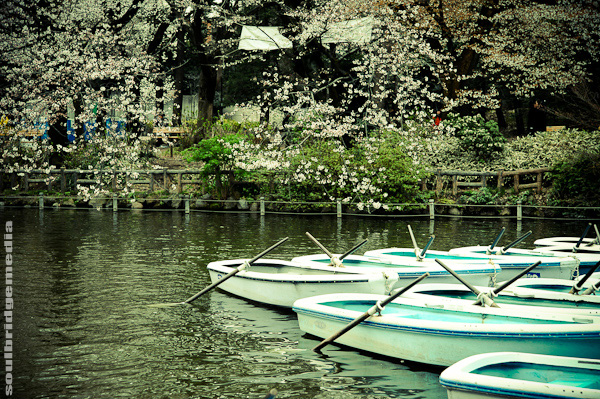
Inokashira Park, Kichijoji, Tokyo
Inokashira Park is a couple hundred metres walk from the station and is completed with numerous walking paths, foot bridges, temple and my personal favourite, water craft for hire in the form of paddle boats and row boats. 600Y gets you 30min of water time in a paddler (less for a row boat, those of you above 170cm might want to consider the row boat as the paddlers cater more for children and the fibreglass seats aren’t particularly well contoured), which is more than enough time to leisurely work your way round the northern half of the lake and to take in the surroundings re: paddle beneath the blossoms trees arching into the water. Try and get there before 10am, as the lake can quickly get cluttered with traffic making it difficult to dodge those trying to grasp the concept of oars and inertia.
The park itself seems quite popular with the locals for picnickers and artists alike, even more so during Sakura season. It also has a small zoo, museum and temple if you can pull yourself away from the blankets of blossoms.
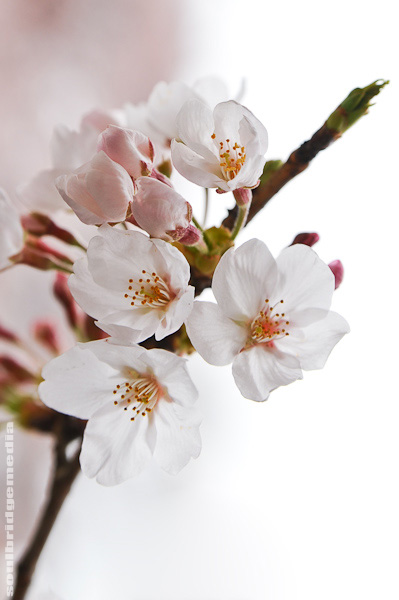
Heading back up one of the main thoroughfares, after 11am, many of the little shops, cafes and street vendors will start to open. There is also a Starbucks for those missing a “taste of home” and a couple sneaker shops with prices up to 1-2000Y cheaper for similar items in the more built up areas. But save your Yen because we’re heading to K-Skit. A block from the main street and about two from the station it is tucked away in a smaller lane on the 3rd floor but there’s a large sign on the footpath, clearly visible if you’re coming from the station side.
The store is wall to wall, floor to ceiling of sneakers all neatly shrink wrapped and focuses mostly on pre-owned Nikes. Condition ranges from beaters and models that are so old they’re literally falling apart to owned but never worn and brand new. Variety is almost endless, it’s a certainty that you will see a colourway or model that you’ve never seen before. The shelves are sorted by brand/model with a high concentration on Air Force series, Dunks and Jordans. Shoes with multiple tags show the sizes available and their cost. Popular sizes (sz 9-11) on the rarer models are usually more.
Weaving through the narrow aisles you will see sections for other brands like Adidas, Reebok and Timberland along with glass cases for the antique sneakers and the super rares. Staff are friendly and are happy to let you try shoes on, there’s just no where to sit while you do it! I picked up a pair of 2007 Nike Air Force 1 Baltimore 410 “Is Mr. shoe in?” limited editions for only 9000Y (~$100US). Not bad when you consider Footlocker AU hocks current garden varieties for $120-160AU!
It’s a good idea to hit up their website a couple weeks before you arrive to get an idea of what’s in stock. New stock and their “price down” section is updated daily with complete transparency of condition eg. “cracks in upper”, “yellowing of midsole” along with clear detailed photos of the tell tale wear areas such as the sole and inside heal, nothing like the sneaker forums or ebay where “worn about 3 times” really means “worn about 3 years”.
If you’re big on vintage clothing there are several shops in the surrounding block, like Ragtag. Otherwise you can venture north under the train line to LA Avenue. Kind of like the baby brother of K-Skit but with a bit of clothing and a few accessories like G-Shock watches. Of course I couldn’t let a 1995 Guassman in mint condition and original box go begging for only 4500Y 😉
Another block north and you’ll find a 2 level Nike store, an Adidas store, a bunch of little restaurants, cafes, tea houses and burger bars along with the aforementioned mall which houses another Yodobashi Camera store.
Shinjuku
Another big station in another very built up area. The highlights here are camera stores, Yodobashi, Bic, Map, all with in a couple blocks of the station or in the station itself and a few large department stores with the focus towards young women (especially the stores inside the station). The main reason why we stopped here is for the Tokyo Metro buildings, about 600m west of the station towards Shinjuku central park. Two towers with a free observation deck on the 45th floor and opened till 11pm most nights (check the daily times on their site, certain days each month, one building is closed while the other is open), unfortunately on the day we were there, visibility was very poor, down to a few hundred meters at times. It looked like a mixture of low cloud, fog, haze and the usual smog, so it was scratched from the itinerary, still comes recommended as one of the best and cheapest views of Tokyo.
South east of these buildings is Shinjuku Gyoen, a much larger park with feature gardens, recreational paths and water features, another ideal place for Hanami (blossom viewing).
Also while in Shinjuku, look south once you’ve cleared the sky scrapers and you will see the Docomo building, one of Tokyo’s tallest buildings.
Tokyo part #1 – Ueno for a day
Tokyo part #2 – Getting round Tokyo, Ueno Sakura at night
Tokyo part #3 – Harajuku
Tokyo part #4 – Shibuya
Tokyo part #6 – Akihabara
Tokyo part #7 – Odaiba and Leaving Tokyo
Photo Gallery Here
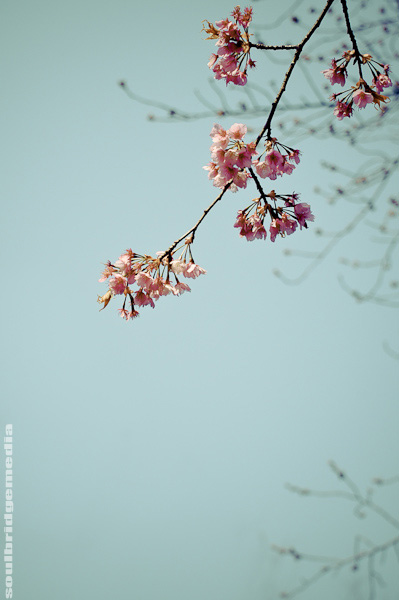
Moshi moshi!
Well the 10 days or so (who knows with all that date line crossing and red eye flights) in the USA flew by and we were back in the T-Y-O. This time a bit more confident of where we needed to go and what we needed to do to get there.
First up, some tips for traveling by public transport in Japan. Buy either a PASMO (pink and blue) or Suica (green) card from the vendor offices round the airport terminal (basically the “metro card” equivalent for any major city). The company colours are also painted round the respective ticketing machines so its easy to spot them when you need to top up your card. We chose Suica cos it had a penguin on it 😉
The card is 2000Y and comes with 1500Y credit (roughly $20/15US respectively) and can be used on pretty much all public transport in Tokyo and a fair portion of Japan. If you take the Keisei Limited express train from Narita airport this will cost you 1000Y and will take you all the way to Ueno (end of the line). The trip takes about 75min and can get quite crowded. Taking your backpack off and throwing it up in the luggage rack helps save space and your shoulders when you’re standing.
If you want a more luxurious experience with reclining seats, luggage areas, vending machines and a saving of about 10-15min off your journey time then take the Keisei Skyliner. All seating is reserved so check your ticket for your seat number. The premium is double what you pay for the standard ride but it is nice to have a metal bottle of Pepsi and a nap without being squashed up against some stranger or having them fall asleep on you. Even during peak hour it was only half full.
You will also find the PASMO and Suica cards work in a variety of businesses. Convenience stores, take aways, some restaurants, duty free and shops in the airport/train stations, handy if you haven’t had a chance to track down a Travelex which will more than likely happen. They are few and far between, so you might want to cash up at the airport or hit the Travelex site for locations. While a lot of the little market stores have EFTPOS, as it goes for traveling anywhere its always good to have a bit of the folding stuff on hand, just in case.
Generally, getting round Tokyo, if you stick to the JR Yamanote line you really can’t go wrong, just make sure you’re heading in the direction you want to go!
Back into it, I like to think I’ve got a pretty good sense of direction and have no problems reading a map, but when people say “Japanese streets can get confusing” believe them and again, don’t trust Google maps!! Some streets are lanes that look like drive ways, some lanes ARE driveways that go the whole block and a lot of them are poorly signed/unsigned. Travel tip: if you don’t know where you are, you won’t know where you’re going!
So misjudging a bend for a corner we set off on a lovely 45min walk in the wrong direction with 2 heavy suitcases each in tow. After some backtracking and cross tracking we still managed to over shoot the hotel wandering the backstreets in it’s surrounding blocks. Thankfully that renowned Japanese hospitality and courtesy to strangers shone through with locals more than happy to help point us in the right direction. One lady out for a cycle with her toddler on board even circled around a couple times to make sure we were heading the right way. Very much a refreshing and welcomed change compared to the States where you couldn’t even pay for good help, and more than often you had to, even for the most remedial of requests!
But I digress. That night we headed back out to the park, noting on our way in how close we were to the station (bout 15min walk) and how wrong we got it. Though its always nice after a walk around to start spotting familiar landmarks/areas.
By now the majority of blossoms were well in bloom and so were the festivities. Families and people of all ages gathered under the trees on tarps and blankets for the Sakura celebration, most completely oblivious to the mercury barely staying in the positives (though a down filled Northface parka does help with that!). There were even areas roped off and set up as makeshift restaurants, complete with boxes for tables and cushions.
With more than 1000 trees in full bloom, Ueno park looked like it was dusted in icing sugar. Truly beautiful.
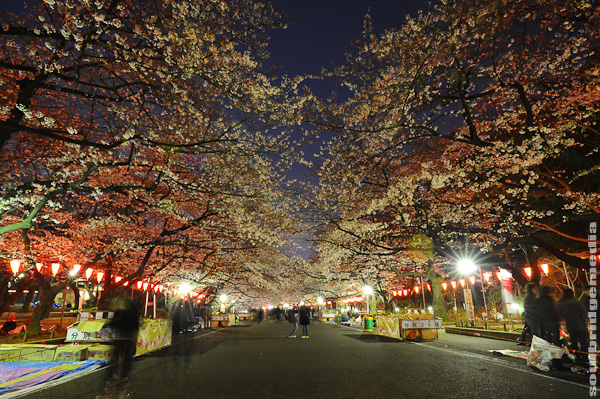
Tokyo part #1 – Ueno for a day
Tokyo part #3 – Harajuku
Tokyo part #4 – Shibuya
Tokyo part #5 – Kichijoji and Shinjuku
Tokyo part #6 – Akihabara
Tokyo part #7 – Odaiba and Leaving Tokyo
Photo Gallery Here

